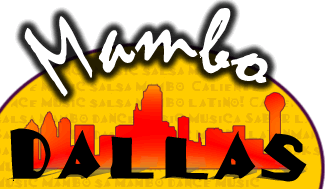
In the United States there are three dominant salsa dance styles: Cuban (Miami) Casino, LA Style (On1), and New York Style (On2).
Cuban (Miami) Casino Style
The main characteristic of Cuban style is that the leader and follower circle around each other in many patterns. The basic step for salsa consist of the counts 1, 2, and 3, where the leader steps forward, replaces, and steps in place. Then, On counts 5, 6, and 7, they step backwards, replace, and steps in place again. Usually the fourth and eighth beats are not counted. The follower does the reversed, so that the couple goes back and forth as a unit.
Another distinctive element of Cuban Style is that the leader does a backward basic on 1-2-3 and a forward basic on 5-6-7. The follower does the same, thereby mirroring the leader's movement. Casino style is famous for Ruedas (circles) dance where multiple couples exchange partners and carry out moves synchronized by a caller.
Los Angeles Style (or On1)
L.A. style is danced on 1, and in a line (slot). It is highly influenced by Hollywood and by the swing & mambo dances. L.A. style emphasizes sensuousness, theatricality, and acrobatics. Dancing On1 means that the leader steps forward on 1 (with the left foot) and continues with the basic step as described above. Francisco Vazquez, along with his two brothers, Luis and Johnny, are often credited with developing the LA style of salsa.
Other people who also helped create L.A. Style as we know it are, Rogelio Moreno, Alex Da Silva, Joby Martinez, Josie Neglia, Cristian Oviedo, Luis 'Zonik' Aguilar and many others. Tony Cordero and Robert Menache helped spread the influence of the LA style to Long Beach and Orange County.
New York Style (On2)
Many also refer to this style as "Mambo" since it breaks on beat 2 of the measure. New York style emphasizes efficiency of movement, elegance, and body isolations. By focusing on control, timing, and precision of technique, dancers aim for smooth execution of tightly woven complex patterns. On 2 timing emphasizes the conga drum's tumbao pattern, and encourages the dancer to listen to percussive elements of the music.
Advocate of New York Style consider this to more accurately reflect the Afro-Caribbean ancestry of the music. New York style dancers are typically very serious about the musicality and timing of their dancing. To satisfy their tastes, "socials" are often held that cater to almost exclusively playing "salsa dura" (or "Hard Salsa"). This is mid-to-up-tempo salsa with an emphasis on percussion and band orchestration rather than the vocals. In a social setting, New York style is danced more compactly than LA style. The etiquette of New York style is strict about remaining in the "slot" and avoiding traveling.New York style tends to place a greater emphasis on performing "shines" where dancers separate and dance solo for a time.The longest-running social in New York is the Jimmy Anton social, which is held every first, third and fifth (if there is a fifth) Sunday of the month.New York Style's first and most famous champion is popularly held to be Eddie Torres. Eddie Torres has been dancing since 1962 and has been teaching since 1970.
Countless figures in the salsa scene have performed with the Eddie Torres dancers, such as Seaon Bristol (a.k.a. Seaon Stylist), Amanda Estilo, Eric Baez, April Genovese de la Rosa, Jai Catalano and many more.Other important figures in the On2 style are Frankie Martinez, Ismael Otero, Tomas Guererro, Osmar Perrones, Griselle Ponce, Milo, Ana and Joel Masacote, and many others.While the New York style is the predominant style found in the eastern United States, the style finds favor with professional salsa dancers and salsa teachers the world over. Thus, it can be seen at salsa congresses all around the world.
Reference:
[1] http://en.wikipedia.org/wiki/Salsa_(dance)
[2] http://www.salsakings.com/index.php?option=com_content&view=article&id=49&Itemid=56
Which style is the best to dance?
Try them all and decide which one feels best for you!! MamboDallas is the only dance school in DFW that can teach you all these styles.